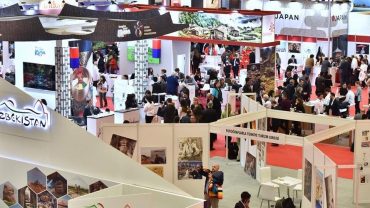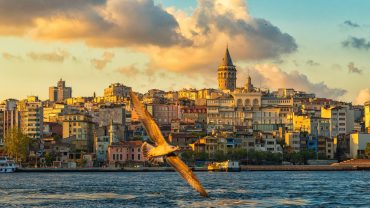
Muğla is a city in south-western Turkey. Muğla is the center of the District of Menteşe and Muğla Province , which stretches along Turkey’s Aegean coast. Muğla’s center is situated inland at an altitude of 660 m and lies at a distance of about 30 km (19 mi) from the nearest seacoast in the Gulf of Gökova to its south-west. Muğla (ğMenteşe) district area neighbors the district areas of Milas, Yatağan and Kavaklıdere to its north by north-west and those of Ula and Köyceğiz, all of whom are dependent districts. Muğla is the administrative capital of a province that incorporates internationally well-known and popular tourist resorts such as Bodrum, Marmaris, Datça, Dalyan, Fethiye, Ölüdeniz and also the smaller resort of Sarigerme.
The district area’s physical features are determined by several pot-shaped high plains abbreviated by mountains, of which the largest is the one where the city of Muğla is located and which is called under the same name (Muğla Plain). It is surrounded by slopes denuded of soil, paved with calcerous formations and a scrub cover which gives the immediate vicinity of Muğla a barren look uncharacteristic for its region. Arable land is restricted to valley bottoms.
A relatively small city of 74,371 (2019 census) and often overlooked by visitors to nearby coastal resorts, Muğla received a new boost with the foundation of Muğla University in the 1990s. Today, the university brings together a student community of several thousands and, added by its academia and staff, it played a key role in bringing movement to the city and in opening it to the outside world. Its former profile as a predominantly rural, difficult to access, isolated and underpopulated region enclosed by a rugged mountainous complex is now coming to an end. Also in recent years, a major program of restoration of the city’s architectural heritage has enhanced local tourism. The city remains an orderly, compact and leafy provincial center, which kept its old neighborhoods without surrendering to a boom in concrete constructions, but displays a progressive mind as exemplified by the pride still expressed at having had Turkey’s first female provincial governor in the 1990s, Ms. Lale Aytaman. Nevertheless, Muğla still lacks sizeable manufacturing and processing centers and relies on trade, crafts, services, tourism and agriculture in its economy. Therefore, tourism in Muğla is a great employment opportunity for the local community and fertile soils and suitable climate conditions also give an opportunity to harvest variety of products for people who deals with the agricultural sector.
History
Classical antiquity
In ancient times, Muğla was apparently a rather insignificant settlement halfway on the passage between the Carian cities of Idrias (later Stratonicea) to the north and Idyma (modern Akyaka) to the southwest on the coast. The indigenous name Mobolla, over time corrupted into “Mogolla” and then further into the modern “Muğla”, appears for the first time in the beginning of the 2nd century BC at the time of its region’s passage from what was apparently an eastern Carian federation linked with Taba (modern Tavas) and other cities to Rhodian domination. Mobolla was part of the Rhodian Peraea on a firm basis as of 167 BC until at least the 2nd century AD. The Rhodian territory started here and while region was subject to Rhodes, it was not incorporated in the Rhodian state.
There are almost no ruins to reveal the history of the settlement of Mobolla. On the high hill to the north of the city, a few ancient remains indicate that it was the site of an acropolis. A handful of inscriptions were unearthed within the city itself and they date back to the 2nd century BC.
In 2018, archaeologists unearthed a 2,300-year-old rock sepulchre of an ancient Greek boxer called Diagoras of Rhodes on a hill in the Turgut village, Muğla province, Marmaris. This unusual pyramid tomb was considered to belong to a holy person by the local people. The shrine, used as a pilgrimage by locals until the 1970s, also has the potential to be the only pyramid grave in Turkey. Excavation team also discovered an inscription with these words: “I will be vigilant at the very top so as to ensure that no coward can come and destroy this grave.
In 2018, archaeological ruins and mosaics discovered in the city have been confirmed to belong to the villa of the Greek fisherman Phainos who lived in the 2nd century AD. Phainos was the richest and the most famous fisherman of his time.
Turkish conquest
Turkish-era Muğla also remained a minor site in the beginning despite having been captured relatively early for western Anatolia in the course of the 13th century. The local ruling dynasty of Menteşe had their capital in Milas.
Ottoman and Republican periods
Muğla acquired regional importance after it replaced Milas as the seat of the subprovince (sanjak) under the Ottoman Empire in 1420. The sanjak kept the name Menteşe until the Republican Era, when it was renamed Muğla after its seat of government.
Climate
Muğla has a Mediterranean Climate. It is characterised by long, hot and dry summers with cool and wet winters.
Places of interest
Although it is close to major resorts, Muğla has only recently begun to attract visitors. Sights of interest in the city include:
Great Mosque of Muğla (Ulu Cami) – large mosque built in 1344 by the Beys of Menteşe
Konakaltı Han and Yağcılar Han – restored 18th century caravanserais, the first used as an art gallery and facing Muğla Museum, and the second used for more commercial purposes
Kurşunlu Cami – large mosque built in 1495
Muğla City Museum has a good collection of archaeological and ethnographical artefacts, as well as 9 million years old animal and plant fossiles recently discovered in Kaklıcatepe nearby
the Ottoman Empire-era bazaar (Arasta) – marked by a clock tower built by a Greek craftsman named Filivari Usta in 1895
Vakıflar Hamam – a still operating Turkish bath which dates back to 1258
The old quarter of Muğla – on the slopes and around Saburhane Square (Meydanı), consisting of about four hundred registered old houses dating from the 18th and 19th centuries, many of which are restored. These houses are mainly in the Turkish/Ottoman style, characterized by hayat (“courtyard”) sections accessed through double-shuttered doors called kuzulu kapı (“lamb doors”) and dotted with chimneys typical of Muğla. But there are also a number of “Greek” houses. The differences between the two types of houses may have as much to do with the extent to which wood or stone were used in their architecture, and whether they were arranged in introverted or extraverted styles, as with who inhabited them previously.
Local students tend to hang out in open air cafés along the İzmir highway or in the caravanserai or in Sanat Evi (“Art House”), an Ottoman style residence that has been turned into a café/art gallery exhibiting principally wood carvings.





Comment (0)